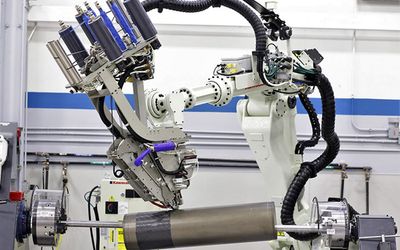Amphenol Commercial Single Pair Ethernet SPE IP Cable Assemblies
Next-gen IEC - compliant industrial Ethernet connectors and cable assemblies
General
| Product Type | IoT & Connectivity Devices |
| Applications | Prototyping & Development, Industrial Automation, Embedded Systems |
| Key Features | IP20 Plug to Pigtail, IP20 Plug to IP20 Plug, 60 V DC, 4 A Current, O/D Range: 3.5mm to 6.4mm |
Technical Specifications
| Product Category | Ethernet Cables/ Networking Cables |
| End Connector Options | IP Plug to Pigtail, IP Plug to IP Plug |
| Cable Lengths | .m, .m, m, m, m, m, m |
| Cable O-D Range | .mm to .mm |
| Current Rating | A (per IEC , Test b) |
| Maximum Voltage Rating | V DC |
| Housing Material | Thermoplastic (TP) |
| Jacket Material | Polyurethane (PUR) |
| Applications | Data, Medical, Industrial & Instrumentation, and Automotive |
Overview
The Amphenol Commercial Single Pair Ethernet (SPE) IP20 Cable Assemblies offer a compact and efficient solution for direct Ethernet connectivity in industrial environments. Designed to connect peripheral devices like sensors, actuators, and vision system cameras, these assemblies support data rates up to 1Gb/s while enabling Power over Data Link (PoDL) up to 4A across distances of up to 1km.
Featuring robust right-angle and vertical PCB receptacles, they mate with field-terminable plugs, ensuring a shielded, secure connection with metal latching. Compliance with IEC 63171-6 guarantees interoperability. The single-pair cabling reduces cost, weight, and space, while 360° shielding and secure latching ensure performance in harsh environments. Field-terminable IDC plugs offer installation flexibility, and SPE eliminates the need for expensive protocol conversion gateways.
Features of SPE IP20 Cable Assemblies
The SPE IP20 Cable Assemblies offer robust, high-speed data transmission for industrial environments. Their design prioritizes efficiency, durability, and simplified installation, catering to diverse applications. Let’s explore these features in detail:
Enhanced Connectivity and Data Transmission
Amphenol's SPE cable assemblies facilitate direct Ethernet connectivity to industrial peripheral devices, including sensors, actuators, and vision system cameras, with data transmission speeds up to 1Gb/s. This system supports Ethernet protocols at 1Gb/s up to 40 meters and 10Mb/s up to 1 kilometer. Utilizing a two-contact, two-wire cable, SPE minimizes connector and cabling costs while enhancing cabling density and installation ease. The assemblies are designed for two-way 600MHz data transmission.
Robust Mechanical and Electrical Design
The assemblies feature mechanically robust and secure latching mechanisms, coupled with 360° shielding, ensuring performance in harsh environments. PCB mount receptacles incorporate robust integrated solder tails with optional board-locks, suitable for pin-in-paste assembly and designed to mitigate mechanical stress. The mated pair maintains 360° shielding for the signal contacts, providing EMI immunity. The assemblies are rated for 4A current, supporting PoDL over cable lengths up to 1 kilometer without signal degradation.
Field Installation and Termination
Insulation Displacement (IDC) termination plugs are integrated to streamline field installation and service procedures. The end connector options include IP20 plug-to-pigtail and IP20 plug-to-IP20 plug configurations. The cable assemblies are available in lengths of 0.5m, 0.75m, 1m, 2m, 3m, 5m, and 10m, accommodating cable outer diameter (O/D) ranges from 3.5mm to 6.4mm.
Operational Specifications
The cable assemblies are rated for a maximum voltage of 60VDC and operate within a temperature range of -40°C to +85°C. The current rating is 4A, as specified by IEC 60512, Test 5b. The SPE system eliminates the need for complex fieldbus protocols and connections, simplifying and standardizing industrial network systems.
Applications
Amphenol SPE IP20 Cable Assemblies find application across diverse sectors. In medical healthcare, they facilitate data transmission in monitoring systems and medical equipment. Automotive applications include integration within traffic control systems. In industrial and instrumentation settings, these assemblies support Industrial Internet of Things (IIoT) deployments, factory and process automation, and robotics, enabling efficient data exchange. Within building automation, they contribute to network infrastructure. Their robust design and high-speed data capabilities make them suitable for environments requiring reliable connectivity and data integrity. The assemblies address the need for streamlined, efficient data communication in applications demanding precise control and monitoring.
Where to find it

Mouser Electronics
Mouser Electronics is a worldwide leading authorized distributor of semiconductors and electronic components.
References
Mouser Electronics - Internet









